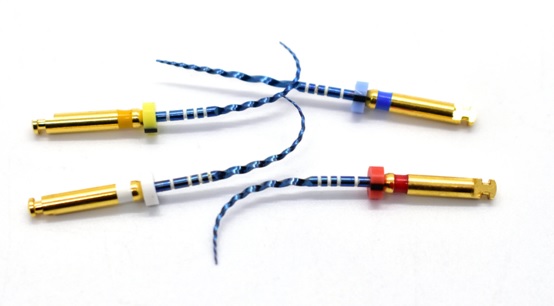The Evolution of Endodontic Treatment Files: A Journey from Rigidity to Flexibility

Endodontics has witnessed a remarkable transformation over the past few decades, particularly in the materials and manufacturing processes of endodontic treatment files. From the stiff and unforgiving metals of the 1970s to the advanced heat-treated alloys of today, the evolution of these critical dental tools reflects contemporaneous broader trends in metallurgy and patient care.
Dr Stefan Ciapryna: Embracing Modern Endodontics
The specialist endodontist in Epsom, Dr Stefan Ciapryna, provides cutting-edge practice and modern endodontics. Dr Ciapryna utilises the latest root canal treatment files in his daily practice, ensuring that his patients receive the most advanced care possible. By opting for treatment with Dr Ciapryna, patients are more likely to experience successful outcomes, as specialists are equipped with the expertise, experience and tools necessary to handle complex cases.
The Shift in Materials
In the 1970s, endodontic files were predominantly made from stainless steel, valued for its strength and durability. However, these files were rigid and offered little flexibility, making them unsuitable for navigating the complex anatomy of root canals. The stiffness of the material often led to a higher risk of file breakage and procedural complications.
Fast forward to the present day, the landscape has changed dramatically. The introduction of nickel-titanium (NiTi) alloys has revolutionised endodontic file design. NiTi files are not only more flexible but also possess shape memory, allowing them to return to their original form even after being bent. This property is particularly beneficial for treating chronic apical periodontitis (root canal infection), as it enables conservative but complex root canal preparations, preserving more tooth structure while effectively removing diseased tissue.
Advancements in Manufacturing Processes
The manufacturing processes have also undergone significant advancements. Initially, files were machined from uniform metal blank in a process that did not allow for much variation in design or performance. Nowadays, sophisticated heat treatment techniques have given rise to files with variable tapers and cross-sectional designs, enhancing their cleaning efficiency and reducing the risk of cyclic fatigue (breaking after multiple cycles of use).
Heat treatment has also led to the development of files like M-Wire and Blue-wire. M-Wire, an innovative NiTi alloy, demonstrates increased flexibility and fatigue resistance compared to traditional NiTi files. Blue-wire files undergo a proprietary heat treatment process that gives them a distinctive blue colour and an even greater degree of flexibility, making them particularly suited for severely curved canals.
The key benefits of M-Wire and Blue-wire in endodontics are centred around their enhanced mechanical properties, which have significantly improved the safety and effectiveness of root canal treatments.
M-Wire Benefits:
- Increased Flexibility:M-Wire instruments are designed to be more flexible than traditional NiTi files. This flexibility allows for better navigation through complex root canal anatomies without compromising the shape of the canal
- Higher Cyclic Fatigue Resistance:M-Wire has a higher resistance to cyclic fatigue, meaning it’s less likely to fracture during use. This is crucial for the safety of the procedure and the integrity of the tooth structure
- Improved Mechanical Properties:The special heat treatment process that M-Wire undergoes after machining enhances its mechanical properties, making it more durable and reliable during endodontic procedures
Blue-wire Benefits:
- Enhanced Flexibility and Fatigue Resistance:Blue-wire files, such as those in the RECIPROC blue system, demonstrate increased flexibility and fatigue resistance. This makes them suitable for use in severely curved canals where traditional files might fail
- Lower Microhardness:Despite their strength, Blue-wire files maintain a lower microhardness, which contributes to their flexibility and reduces the risk of file separation within the canal
- Surface Quality:The titanium oxide layer present on Blue-wire files improves their cutting efficiency and wear resistance, which is beneficial for effectively shaping the root canal while preserving the tooth structure
Both the M-Wire and Blue-wires represent significant advancements in endodontic file technology, offering endodontists like Dr Stefan Ciapryna the tools to provide safer, more effective treatments with better outcomes for patients suffering from root canal infection.
Evidence of Safety and Effectiveness
Studies have shown that these modern alloys maintain the canal curvature well and are safe to use. The shaping ability of reciprocating single-file systems made from these materials has been compared favourably to older systems. Furthermore, the American Association of Endodontists has reaffirmed the safety and effectiveness of root canal treatment, underscoring the reliability of these advanced materials.
Conclusion: The Assurance of Modern Care
Patients seeking endodontic treatment today can take comfort in knowing that a root canal specialist endodontist in Epsom like Dr Stefan Ciapryna are at the forefront of dental technology, using the most modern materials available. With a commitment to excellence and a gentle, compassionate approach, Dr Ciapryna ensures that each patient receives the highest standard of care by encompassing the advancements in materials and metallurgy to provide effective and safe treatment outcomes.
In the ever-evolving field of endodontics, the shift from rigid to flexible, shape-memory files represents a leap forward in patient care. As materials and manufacturing processes continue to advance, the promise of even more effective and conservative treatments will become commonplace, led by a specialist endodontist in Epsom such as Dr Stefan Ciapryna.
